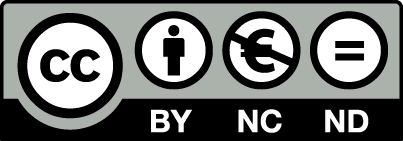Antimicrobial agent of plant origin (Pelargonium sidoid root extract) in the prevention of complications of ARVI: Clinical observation
https://doi.org/10.21518/ms2025-411
Abstract
Acute respiratory viral infections (ARVIs) remain one of the leading causes of morbidity and temporary disability worldwide. Bacterial complications such as sinusitis, bronchitis, and pneumonia significantly worsen prognosis and increase the burden on healthcare systems. The rising resistance of microorganisms to antibacterial therapy highlights the need for alternative therapeutic strategies, including plant-derived agents with proven antimicrobial and immunomodulatory activity. Pelargonium sidoides DC root extract has demonstrated efficacy in reducing the risk of complications and improving outcomes in respiratory tract infections. We present a clinical case illustrating the use of a preparation based on Pelargonium sidoides root extract in a patient diagnosed with ARVI and a history of recurrent sinusitis. The administration of the phytotherapeutic preparation was associated with favorable clinical dynamics, including symptomatic improvement and prevention of bacterial complications. Pelargonium sidoides root extract may represent a valuable therapeutic option in the management of ARVIs, particularly for patients at risk of bacterial complications. The results obtained are consistent with the literature data showing that the herbal medicine exhibits a pronounced adjuvant effect in upper respiratory infections, improves mucociliary clearance, and reduces the risk of bacterial complications.
About the Authors
I. M. KirichenkoRussian Federation
Irina M. Kirichenko, Dr. Sci. (Med.), Department of Otorhinolaryngology of the Medical Institute, Peoples’ Friendship University of Russia named after Patrice Lumumba; Head of the Department of Otorhinolaryngology, International Medical Center On Clinics
6, Miklukho-Maklaya St., Moscow, 117198,
32, Bldg. 1, Bolshaya Molchanovka St., Moscow, 121069
V. I. Popadyuk
Russian Federation
Valentin I., Popadyuk, Dr. Sci. (Med.), Dean of the Faculty of Postgraduate Education and Head of the Department of Otorhinolaryngology of the Medical Institute
6, Miklukho-Maklaya St., Moscow, 117198
N. S. Kozlova
Russian Federation
Natalia S. Kozlova, Assistant of the Department of Otorhinolaryngology, Peoples’ Friendship University of Russia named after Patrice Lumumba; Otorhinolaryngologist, International Medical Center On Clinics
6, Miklukho-Maklaya St., Moscow, 117198
M. M. Mamadkulov
Russian Federation
Muslikhiddin M. Mamadkulov, Postgraduate Student of the Department of Otolaryngology
6, Miklukho-Maklaya St., Moscow, 117198,
32, Bldg. 1, Bolshaya Molchanovka St., Moscow, 121069
References
1. Kozlov KV, Maltsev OV, Kasyanenko KV, Sukachev VS, Lyashenko YI, Kosuhina AA. Comparative assessment of the clinical effectiveness of direct-acting antiviral drugs in outpatient patients with acute respiratory viral infections. Terapevticheskii Arkhiv. 2024;96(8):797–803. (In Russ.) https://doi.org/10.26442/00403660.2024.08.202911.
2. Garashchenko TI, Kirichenko IM. Sinupret in the treatment of acute sinusitis in children with a viral infection. Meditsinskiy Sovet. 2017;(1):108–114. (In Russ.) https://doi.org/10.21518/2079-701X-2017-1-108-114.
3. Nosulya EV, Kryukov AI, Kunelskaya NL, Kim IA. Acute sinusitis: topical issues of terminology and diagnosis. Vestnik Oto-Rino-Laringologii. 2021;86(3):72–77. (In Russ.) https://doi.org/10.17116/otorino20218603172.
4. Ilyina TS, Romanova YuM. Bacterial bio films: their role in chronical infection processes and the mean stocombat them. Molecular Genetics, Microbiology and Virology. 2021;39(2):14–24. (In Russ.) https://doi.org/10.17116/molgen20213902114.
5. Bustamante-Marin XM, Ostrowski LE. Cilia and Mucociliary Clearance. Cold Spring Harb Perspect Biol. 2017;9(4):a028241. https://doi.org/10.1101/cshperspect.a028241.
6. Boiko NV, Lodochkina OE, Stagnieva IV. Prospects for the treatment of chronic rhinosinusitis. Russian Rhinology. 2020;28(4):235–240. (In Russ.) https://doi.org/10.17116/rosrino202028041235.
7. Solonin SA, Tereshkina NE, Godkov MA. Peculiarities of specific antibody detection in blood in some acute respiratory viral infections. Laboratory Service. 2023;12(3):20–28. (In Russ.) https://doi.org/10.17116/labs20231203120.
8. Paget C, Trottein F. Mechanisms of Bacterial Superinfection Post-influenza: A Role for Unconventional T Cells. Front Immunol. 2019;10:336. https://doi.org/10.3389/fimmu.2019.
9. Sabbione F, Gabelloni ML, Ernst G, Gori MS, Salamone G, Oleastro Met al. Neutrophils suppress γδ T-cell function. Eur J Immunol. 2014;44(3):819–830. https://doi.org/10.1002/eji.201343664.
10. Kirdeeva AI, KosiakovSIa. The peculiarities of endotyping and phenotyping of chronic rhinosinusitis. Russian Rhinology. 2017;25(2):58–63. (In Russ.) https://doi.org/10.17116/rosrino201725258-63.
11. Timmer A, Günther J, Motschall E, Rücker G, Antes G, Kern WV. Pelargonium sidoides extract for treating acute respiratory tract infections. Cochrane Database Syst Rev. 2013;2013(10):CD006323. https://doi.org/10.1002/14651858.CD006323.pub3.
12. Careddu D, Pettenazzo A. Pelargonium sidoides extract EPs 7630: a review of its clinical efficacy and safety for treating acute respiratory tract infections in children. Int J Gen Med. 2018;11:91–98. https://doi.org/10.2147/IJGM.S154198.
13. Riley DS, Lizogub VG, Heger M, Funk P, Mueller H, Lehmacher W. Treatment with EPs 7630, a Pelargonium Sidoides Root Extract, Is Effective and Safe in Patients with the Common Cold: Results From a Randomized, Double Blind, Placebo-Controlled Clinical Trial. Integr Med. 2019;18(1):42–51. Available at: https://pubmed.ncbi.nlm.nih.gov/31341433.
14. Neugebauer P, Mickenhagen A, Siefer O, Walger M. A new approach to pharmacological effects on ciliary beat frequency in cell cultures – exemplary measurements under Pelargonium sidoides extract (EPs 7630). Phytomedicine. 2005;12(1-2):46–51. https://doi.org/10.1016/j.phymed.2003.11.005.
15. Reina BD, Malheiros SS, Vieira SM, Ferreira de Andrade P, Dovigo LN. Unlocking the therapeutic potential of Pelargonium sidoides natural extract: A scoping review. Heliyon.2024;10(23):e40554. https://doi.org/10.1016/j.heliyon.2024.e40554.
16. Papies J, Emanuel J, Heinemann N, Kulić Ž, Schroeder S, Tenner B et al. Antiviral and Immunomodulatory Effects of Pelargonium sidoides DC. Root Extract EPs® 7630 in SARS-CoV-2-Infected Human Lung Cells. Front Pharmacol. 2021;12:757666. https://doi.org/10.3389/fphar.2021.757666.
17. Koch AK, Klose P, Lauche R, Cramer H, Baasch J, Dobos GJ, Langhorst J. A Systematic Review of Phytotherapy for Acute Rhinosinusitis. Forsch Komplementmed. 2016;23(3):165–169. (In German) https://doi.org/10.1159/000447467.
Review
For citations:
Kirichenko IM, Popadyuk VI, Kozlova NS, Mamadkulov MM. Antimicrobial agent of plant origin (Pelargonium sidoid root extract) in the prevention of complications of ARVI: Clinical observation. Meditsinskiy sovet = Medical Council. 2025;(18):29-33. (In Russ.) https://doi.org/10.21518/ms2025-411










































